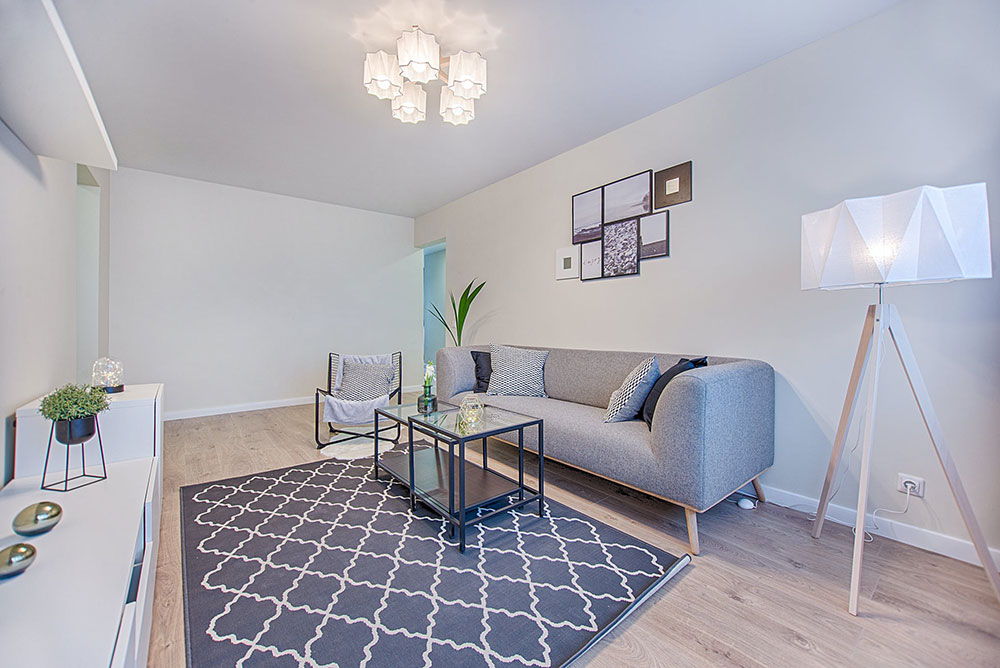5 Top Tips For Painting Skirting Boards

Most of us are familiar with the humble skirting board. Almost every room will have them and how they’re finished makes a big difference to whether your overall painting project is a success or not. Before you start painting – or repainting - your skirting boards, here’s our top 5 tips to getting a professional finish.
1. Paint in the right order
It could be tempting to start your room painting project at the skirting boards and trims, given these are the smallest areas in a room to cover. However, if you want to paint a room like a professional, doing this means you may run the risk of splashes and drips on other areas. The best order for painting is top to bottom. That is:
- Ceiling
- Walls
- Trims
- Skirting boards
But that doesn’t mean you need to panic if you’ve started in a different area or happen to drip paint during the process; as you work your way down the room, you can touch up areas to achieve the flawless finish you’re aiming for.
2. Get your tools together
There’s nothing worse than getting started on a job only to realise you don’t have the tools you need. You’ll need a few essential items - aside from paint - to get the most out of not just painting your skirting boards but painting the rest of the room too. Organise these items before you start your project:
- Drop sheets for your floors (these can be old sheets or curtains if you have them on hand)
- Soap and water (sugar soap is ideal)
- Plenty of cloths or dry rags for cleaning up accidental spills or drips
- Painter’s tape: we recommend choosing a low-tack one as it’s easier to remove at the end
- Wood filler and a putty knife for fixing any holes or cracks in your skirting boards
- Fine grit sandpaper, ideally 120 grit
- An angled paintbrush
- A straight paintbrush
- A paint tray
If you’re using equipment from a previous painting job, make sure everything is clean and in good condition. Your overall finish will only be as good as the tools you use.
- Get the right paint for your room
Regardless of colour, choosing the right paint finish for your skirting boards is critical for getting the finish right for the room. There are a lot of options available, and each have their distinct advantages:
- Gloss – gloss paint is high sheen, so it gives a shiny finish while being highly durable, hard wearing, and easy to clean
- Satin – satin paint provides a semi-gloss finish, which complements bold colours for a modern and contemporary look while still being easy to maintain with regular wipe downs
- Matte – matte paint has little to no sheen, and is often used in larger spaces; it’s ideal for rooms like bathrooms, kitchens, or high traffic areas
If you aren’t sure which paint finish is right or are worried about making the wrong decision and facing a do-over, satin paint is a safe choice. It will provide you with the best of both worlds, while being durable, easy to maintain, and providing a crisp modern finish.
4. Preparation is key
Preparation is the key to a quality finish. Once you have all your tools and have selected your paint, then you’re ready to prep your painting area. To get started:
- Vacuum the floor to remove any debris and dust that could get in your paint.
- Protect your floors by laying drop sheets, old sheets, or masking carpet.
- Give your skirting boards a light sand; you don’t have to remove all the old paint (if you have any) but you want a smooth surface with no flaking paint or bumps.
- Fill any holes or cracks. Once your hole filler is set, you’ll need to lightly sand the area again.
- Vacuum up any sanding dust and give your skirting boards a good wipe down with soap and water – microfibre cloths are good for picking up any remaining dust and debris created from sanding. When you’re done, wring your cloth one more time and give your skirting boards a quick dry.
- Mask up your edges. You don’t want to ruin your freshly painted wall by getting skirting board paint on it.
5. Start with a primer
It might feel like an extra step but applying primer before you paint any surface will give you an overall better finish. A quality primer will:
- Seal your skirting boards
- Prevent colour seepage through your new paint
- Give you a smoother, more professional finish
Once your primer is set, give it a light sand before applying your first coat of colour. It’s a good idea to lightly sand between each layer of paint (even your colour coats) to get the best finish overall.
Getting professional help by the experts
Painting your skirting boards is an essential final step in freshening up and modernising any room. When done well, it ties all other elements of your room together. However, if not done well, you could find yourself repainting areas of your wall, or repairing chips and nicks which is a time-consuming process.
Here at Kraudelt Painting, we’re the interior painting experts, and know exactly how to ensure you get a high-quality finish needed that will last the distance in any room. For professional advice, colour consultancy and a quote for any interior painting project, get in touch today.
